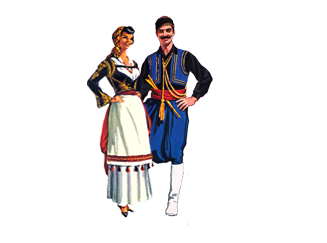

Cretans in local costume, 1900 (R. Behaeddin, Vikelaia Municipal Library, Heraklion)
A Cretan in a gilotta (military style baggy trousers) (Stephanos Stavroulakis)
A young man in Cretan baggy trousers (Stephanos Stavroulakis)
Traditional man's costume featuring a cape (Constantinos Grammatikakis Collection)
Old man in traditional dress, early 20th century (Ioannis M. Tzanis Collection)
Young Cretan children in typical costumes, early 20th century (photograph: Hamza Rustem, Ioannis M. Tzanis Collection)









